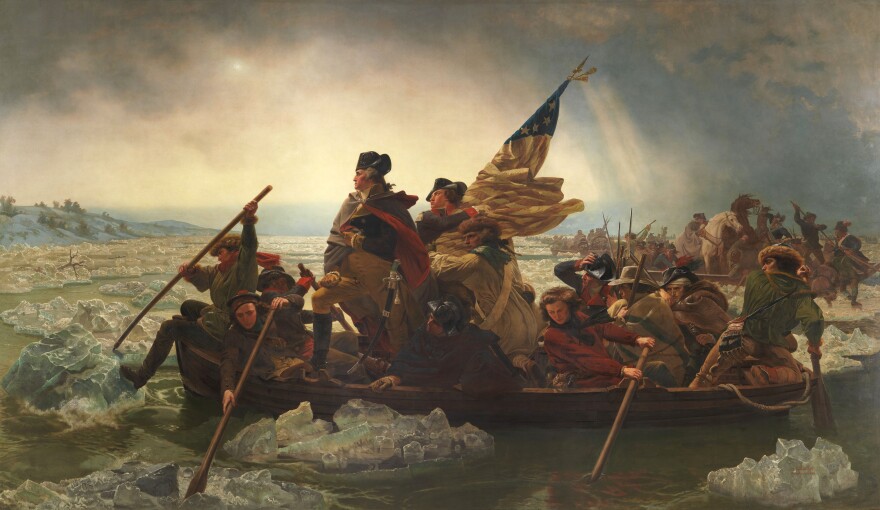When we think of the seminal moments in the birth of the United States of America, many people would point to the battles of Lexington, Concord and Bunker Hill. But according to Robert Sullivan, the founding landscape of our nation is not in Massachusetts. It is in and around New York.
In his new book, My American Revolution: Crossing the Delaware and I-78, Sullivan writes that the majority of battles in the Revolutionary War were fought in the middle colonies: New York, New Jersey, Connecticut and Pennsylvania.
In the book, he retraces the steps of Washington and his soldiers on a 30-mile trek north from the Delaware River. Sullivan tells weekends on All Things Considered host Guy Raz, the journey took him through the Watchung Mountains, a low mountain range in New Jersey, that played a key role in the Revolution. It is where Washington lit fires as warning signals to those in New York, when he saw movement by the British force.
Sullivan wanted to do his own reenactment. He managed to use a mirror and the sun's reflection to send a signal to his daughter 20 miles away in Brooklyn. Through the process, Sullivan discovered something about those signal posts. They have been critical points throughout our history.
He tells Raz, they were used as anti-Soviet missile sites by the American military. "And then at 9/11 each one of these sites had become exactly a place where people went ... to see the towers come down," he says. "These high points mattered to us strategically."

Boston has its Liberty Trail, but Sullivan says, Revolutionary landmarks in and around New York tend to go unnoticed. It could be because the British were often on the winning side of the battles fought there. "We don't champion them naturally. It's hard to champion great losses and defeats and evacuations." Like the Battle of Brooklyn, which wound up being the first big fight and failure of the Revolution.
"It was an evacuation," Sullivan tells Raz. The British "cornered Washington up into what is today Brooklyn Heights." But the Marbleheaders, a brigade from Massachusetts, rowed Washington and his troops to safety across the East River.
Though these sites might seem trivial today, Sullivan wants to champion them as footnotes of history — "and make the footnotes the top part," he tells Raz. "What we stand in is the kind of everyday landscape that seems to be no big deal in history. And so this kind of footnoted history is more about humility and understanding that you can't fight certain things."
Copyright 2023 NPR. To see more, visit https://www.npr.org.


